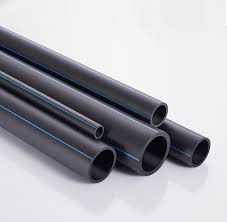Nov . 02, 2024 10:16 Back to list
china hdpe pipe to pvc pipe connection
Connecting HDPE Pipes to PVC Pipes A Comprehensive Guide
In various industrial and domestic applications, the need to connect different types of piping systems is commonplace. Among these, High-Density Polyethylene (HDPE) and Polyvinyl Chloride (PVC) pipes are two of the most widely used materials. Both have their advantages and specific applications, but connecting them can pose challenges due to their different physical properties and connection methods. This article aims to provide insights into effectively connecting HDPE pipes to PVC pipes.
Understanding HDPE and PVC Pipes
HDPE pipes, known for their chemical resistance, high tensile strength, and flexibility, are extensively used in water supply, irrigation, and municipal applications. Their smooth interior walls reduce the likelihood of blockages and biofilm growth. Conversely, PVC pipes are popular for their durability, affordability, and ease of installation. They are commonly used in plumbing, sewage systems, and drainage applications.
Challenges in Connecting HDPE to PVC
One of the primary challenges in connecting HDPE to PVC lies in their different coefficients of thermal expansion. HDPE expands and contracts more than PVC with temperature fluctuations, making flexible coupling essential to accommodate this movement. Additionally, the connection must be watertight to prevent leaks and maintain system integrity.
Connection Methods
There are several methods to connect HDPE pipes to PVC pipes
1. Mechanical Couplings These are the simplest and most reliable connection types. A mechanical coupling consists of a fitting that can accommodate both HDPE and PVC pipes. This method often employs rubber gaskets or O-rings to ensure a watertight seal while allowing for some flexibility.
china hdpe pipe to pvc pipe connection

2. Transition Fittings Transition fittings specifically designed for connecting different pipe materials can be used. These fittings typically have one end for HDPE and the other for PVC, making them a convenient option for such connections.
3. Adhesive and Solvent Cement While not always recommended due to the differing properties of the two materials, some professionals may choose adhesives or solvent cement for creating a bond. However, this is less common and may not provide the same level of reliability due to the long-term flexibility needed in the joint.
4. Flanged Connections Flanged connections can also be used, where both HDPE and PVC pipes are fitted with flanges, allowing for a stable connection. This method, while more cumbersome, can offer a robust solution in high-pressure applications.
Best Practices
When connecting HDPE to PVC, consider the following best practices
- Ensure Compatibility Always check that the fittings and couplings are suitable for both materials. - Use Proper Tools Use the appropriate tools for cutting and preparing both types of pipes to ensure a clean and effective connection. - Check for Leaks After installation, conduct a thorough inspection for leaks and ensure everything is securely fastened. - Consult Professionals If unsure, consulting with plumbing professionals can provide additional insights and recommendations tailored to specific project requirements.
Conclusion
Connecting HDPE to PVC pipes is a task that requires careful planning and understanding of both materials. By choosing the right connection method and adhering to best practices, one can ensure a reliable and efficient piping system that meets the demands of various applications.
-
High-Quality PVC Borehole Pipes Durable & Versatile Pipe Solutions
NewsJul.08,2025
-
High-Quality PVC Perforated Pipes for Efficient Drainage Leading Manufacturers & Factories
NewsJul.08,2025
-
High-Quality PVC Borehole Pipes Durable Pipe Solutions by Leading Manufacturer
NewsJul.08,2025
-
High-Quality PVC Borehole Pipes Reliable PVC Pipe Manufacturer Solutions
NewsJul.07,2025
-
High-Quality UPVC Drain Pipes Durable HDPE & Drain Pipe Solutions
NewsJul.07,2025
-
High-Quality Conduit Pipes & HDPE Conduit Fittings Manufacturer Reliable Factory Supply
NewsJul.06,2025

